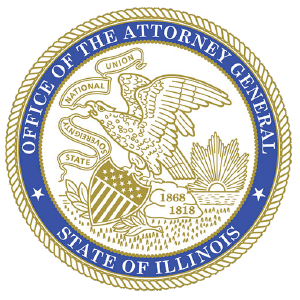Vincent McCaffrey
Father Vincent McCaffrey warned at least one of the children he was sexually abusing to keep it a secret. Those threats worked; the survivor remained silent for years. But when he summoned the courage to come forward in 2004, his experience could not have come as any surprise to the Archdiocese of Chicago. Church officials had known for decades about McCaffrey’s sexual interest in children.
There are many survivors of McCaffrey’s abuse. One died by suicide. All have lived with mental, physical, and emotional struggles. As one survivor testified, “I just have very little faith and trust in people. I mean, I had an experience with this man who, the way I was raised, [priests] were next to God. For a person of that caliber and stature to do what he had done to me was beyond my belief. To this day, I tend to see the darker side of people than the better side.” The survivor added: “The archdiocese is just as much to blame as Vincent McCaffrey is.”
McCaffrey’s abuse took many forms, including fondling, oral sex, and anal penetration. He used psychological manipulation and strategy to isolate and overpower his victims, often taking the children to secluded cabins, forcing them to drink alcohol, and drugging them. One survivor remembered a trip with McCaffrey when he was 13 or 14: “I remember being in the hot tub after playing racquetball and him holding me down and me coming up gasping for air, spitting water, and that was his way of intimidating us and letting us know that he would physically take us if need be.” Another survivor reported that McCaffrey molested him more than 200 times from the time he was a prepubescent boy until his high school graduation.
McCaffrey is one of the most well-known and notorious sex abusers in the country. Unlike most priests profiled in this report, McCaffrey was prosecuted and sentenced for his crimes—his aggravated abuse of children increased his federal child pornography sentence to the 20 year statutory maximum, the longest sentence anyone had received for possession of child pornography at the time. By his own admissions under oath at his criminal sentencing, McCaffrey abused more than a dozen prepubescent children, all of whom he accessed through his role as priest. The total number of times McCaffrey has abused children is estimated to be in the hundreds.
Archdiocesan officials knew about McCaffrey’s patterns of abuse as early as 1979; so did several of his fellow clerics. Yet the archdiocese declined to remove McCaffrey from ministry. He was able to continue molesting and abusing children until his 1993 resignation—“hundreds of times” according to his own testimony. McCaffrey admitted it is hard for him to keep track of the children he abused because he is a “serial molester” and “predator” “who cannot be cured.”
Despite the severity of McCaffrey’s abuse, the archdiocese’s internal discussions minimized it and used euphemisms rather than accurately naming him as a predator. In a 1989 memo, for example, the vicar for priests recounted his phone conversation with a concerned priest who “recently heard from another priest some gossip about why [McCaffrey] left St. Josaphat’s.” The vicar explained he kept the priest in the dark about McCaffrey’s “problem.”
These efforts to conceal McCaffrey’s abuse reflect a larger ethos that prioritized the church’s reputation over children’s safety. In a 1989 memo to Cardinal Joseph Bernardin, the vicar for priests recommended McCaffrey’s transfer from Saint Josaphat in Chicago’s Lincoln Park neighborhood due to an anonymous report that McCaffrey was abusing parish boys. The vicar acknowledged McCaffrey was a “pedophile” yet concluded “the best thing would be for Vince to move” to another parish to avoid “the risk of [Saint Josaphat] being hurt in any way.” “The sad thing,” the vicar admitted, “is that this threat will hang over Vince until the day he dies.”
The archdiocese’s preoccupation with concealing McCaffrey’s abuse extended across the institution. In 1980, the pastor of Our Lady of Loretto in Hometown wrote a letter to the archdiocese’s personnel board after a teenage boy and his parents reported McCaffrey’s abuse to local police. The pastor shared his “gut feeling” that McCaffrey’s “friendship with some of the young kids” in the area reflected “ground work . . . being laid” for abuse. Still, the pastor’s primary concern was not for the children but rather for the containment of scandal. He expressed gratitude that the police “have been very good in keeping the situation quiet” and admitted lying to parishioners about the reason for McCaffrey’s recent absence: “This is a small town and I had to tell the people he was sick and that it was alcoholism to stop the speculation.” Yet the pastor too had been a victim of the archdiocese’s silence; he was kept in the dark about McCaffrey’s “psychological problem” when the church abruptly transferred him to Our Lady of Loretto only one year earlier: “When I find his former Pastor, the Vicar of the area and the Personnel Board all know of the problems and no one tells the ‘receiving Pastor,’ I think something is wrong. Please review your policy in this matter.”
Archdiocesan documents related to McCaffrey highlight the same pattern over and over again—the use of euphemisms, lack of concern for the children being abused, and efforts to conceal and cover up McCaffrey’s abuse. This permitted, and even encouraged, McCaffrey’s continued abuse of children over several decades.
